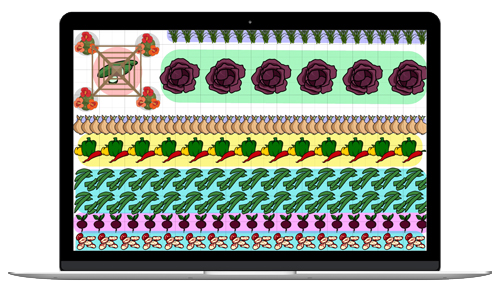
Planting, Growing, and Caring for Lupines
The Almanac Garden Planner - Use It Free for 7 Days!
Plan your 2025 garden with our award-winning Garden Planner.
There are over 200 wild species of lupine, and most are North American natives. These usually have blue, white, or yellow flowers.
Garden lupine (Lupinus polyphyllus), aka big-leaved lupine: blue, pink, and purple flowers; native to much of western North America; prefers moist environments.
Wild Lupine (Lupinus perennis) is a blue perennial plant that grows in the eastern half of North America.
Texas Bluebonnet (L. texensis) is an annual plant with dark blue flowers with white markings that cover fields and roadsides in Texas every April.
Russell hybrid lupines (L. polyphyllus) also called garden lupines have been the basic perennial group from which all new hybrids are created. Be patient; it can take a year to begin its abundant blooms.
The Russell Lupine Mix seeds are easy to grow and the tall flowers bloom in a variety of colors.
Lupine Woodfield Hybrids are perennial plants that come in deeper shades and beautiful bi-colored blooms.
Dwarf hybrids ‘Dwarf Lulu’ and ‘Minarette’ grow only to 1 ½ to 2 feet tall. Excellent for small gardens, containers, or the front of beds and borders. Plants grow to 20 inches tall. Winter hardy to zone 4.
ADVERTISEMENT
After the Lupins have finished blooming, can I transplant to another garden without the plant dying??
I bought a flowering lupine but it fell and top broke how can I care for it
Just bought a lupine plant. Can I pot it in a large container
What am I missing? I'm just a little confused, how do you soak the seeds in WARM water for 1 to 2 days? The water will cool down after a few minutes unless there's some sort of heat source, won't it?
Hi Denise,
You want to start soaking lupine seeds in warm water. The key is to make sure you are not starting with cold water. The water will cool down over the soaking time, so keep it in a location that is warm. If you feel that the water has cooled down significantly you can certainly freshen with warm water during the soaking time.
In VT after the Lupine have gone to seed along the roadways, I collect the seeds take them to my fields and scatter mimicking what goes on naturally. Some tale, many don't. In several places I didn't scatter, suddenly the plant grows. Must have been either bird or animal was the culprit doing natures thing. Trying to plant the seeds hasn't worked well. Mother Nature to the rescue. In Northern VT Newark, they grow wild greatly. Family has a field full of them. Seeds get scattered by the mowing of the fields. Didn't know the seeds were eatable.
During the spring bloom Lupines grow along the roads and stretch for many miles along Hwy 28 and junction with Hwy 2 in Michigan's Upper Peninsula and well into Wisconsin following the Lake Superior shore to Minnesota. The drive is a pleasure and the Lupine bloom makes it worth planning travel ahead and bring your camera.
I my lupin seeds germinated after 6 days and I didn't soak them or fiddle with sand paper.
Seems like a bizarre piece of advice not sure if originates from ancient times and no one ever questioned its validity.
Lupins self seed naturally and seeds need no help from a sand paper ! I suggest you probably should remove that as it sounds a bit silly.
In self-seeding Lupines the seed spends fall and winter on the ground. That usually includes a few feet of snow for 4 months in northern lower Michigan. I collect and save seeds properly and with care. A little soak to get the winter off is light duty compared to the wild thing.
Actually it is not silly at all. Stratification and scarification are recommended for many plant seeds since those processes greatly improve germination rates.











